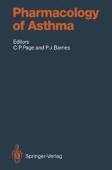Search
Search Results
-
Expansion of an unstable trinucleotide CAG repeat in spinocerebellar ataxia type 1
Spinocerebellar ataxia type 1 (SCA1) is an autosomal dominant disorder characterized by neurodegeneration of the cerebellum, spinal cord and...
-
Molecular heterogeneity of autosomal dominant cerebellar ataxia: analysis of flanking microsatellites of the spinocerebellar ataxia 1 locus in a northern European family unequivocally demonstrates non-linkage
This study addresses the question whether the different forms of autosomal dominant cerebellar ataxia (ADCA) are related to different...
-
Local cerebral glucose utilization in the brain of old, learning impaired rats
The local cerebral glucose utilization (LCGU) was measured in 63 different cortical areas and nuclei of the telencephalon, diencephalon and...
-
Inflammatory Mediators
The pathological changes in asthma are likely to be produced by the release of several mediators from inflammatory cells in the airways and the...
-
Local cerebral glucose utilization in the hippocampus of old rats
The local cerebral glucose utilization (LCGU) was measured in the different areas and layers of the Ammon's horn and dentate gyrus of young adult (3...
-

-
Hereditary cerebellar ataxia and genetic linkage with HLA
Five families with at least three generations of members affected with autosomal dominant spinocerebellar ataxia (SCA) were studied. HLA ty** was...
-
Mitochondrial dysfunction and spinocerebellar degenerations
A simplified classification of the spinocerebellar degenerations is proposed. Axonal ataxias include Friedreich’s ataxia and other conditions...
-
Chemotherapy of Gastrointestinal Nematodiasis in Man
Intestinal worms have always been and are still problems for humans. The awareness of practitioners has been generally limited to the...
-
Modulation of Catecholaminergic Receptors During Development and Aging
The density and nature of neural and hormonal receptors govern, to a large extent, the ability to which an organism can function in a changing...
-
Immunopathology of Parasitic Diseases: A Conceptual Approach
The pathology caused by parasites, the most prevalant infectious diseases of humankind, can be divided into two major aspects: the first relates to...
-
Immunity in Schistosomiasis: A Holistic View
Schistosomes are parasites of ancient lineage. Mammalian and avian schistosomes, in the family Schistosomatidae, are members of a natural,...
-
Adjuvants and Immune Regulation by Lymphoid Cells
The modern concept of the mode of action of adjuvants has evolved in exact relation to our understanding of the lymphoid organ system and the...
-
Adjuvants and immune regulation by lymphoid cells
The study of adjuvant action is of obvious importance at both theoretical and practical levels. It has evolved in the last decade with the use of...
-
Enzymes
Cerebral enzymes have been studied for quite some time now. Oppenheimer,(1) in his review of the enzymes found in the brain, mentioned the presence...
